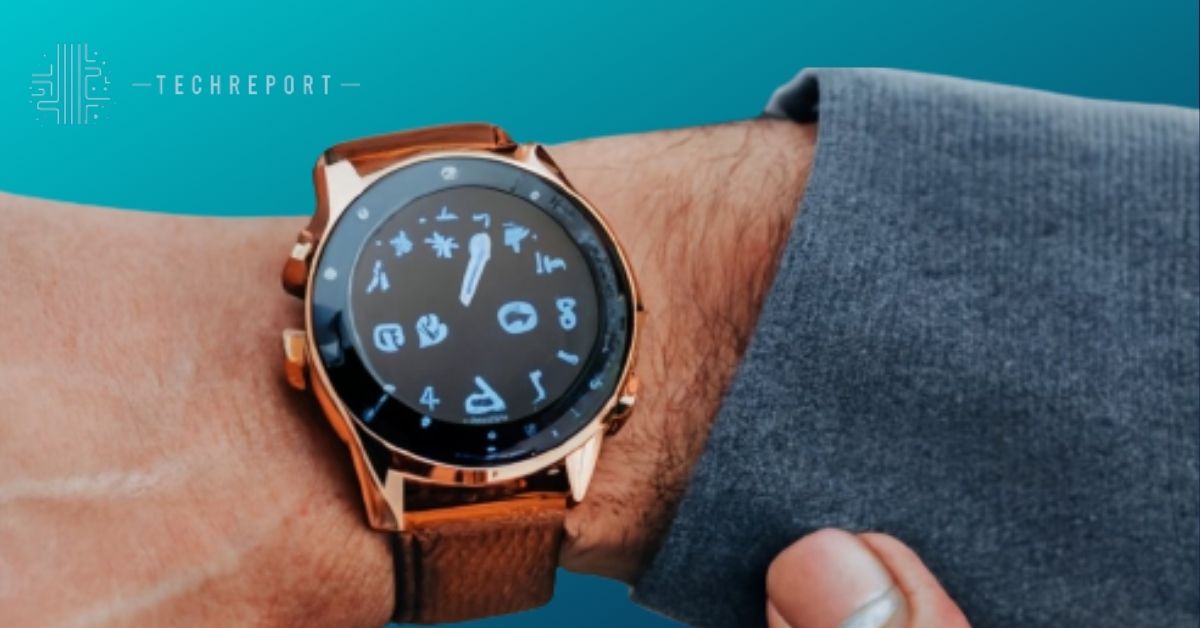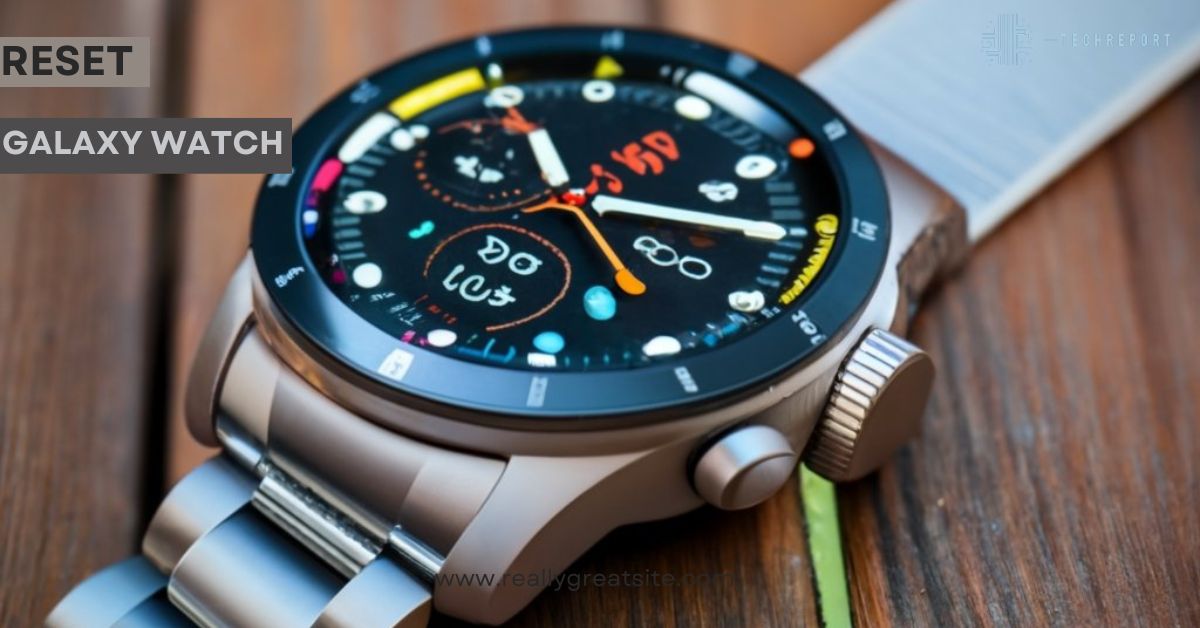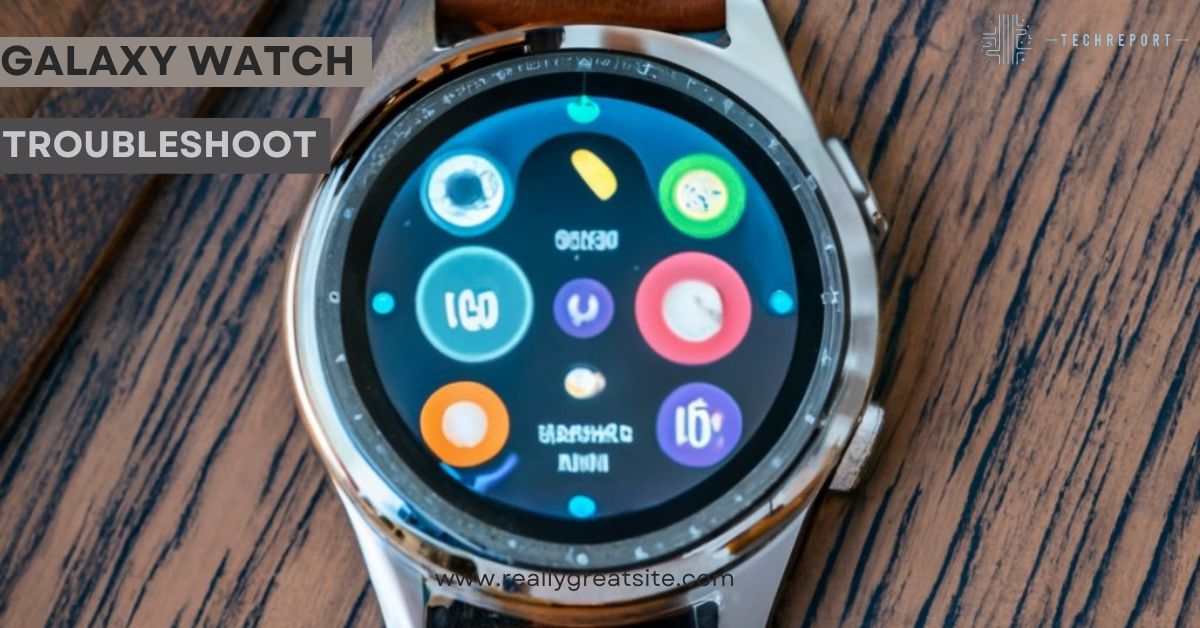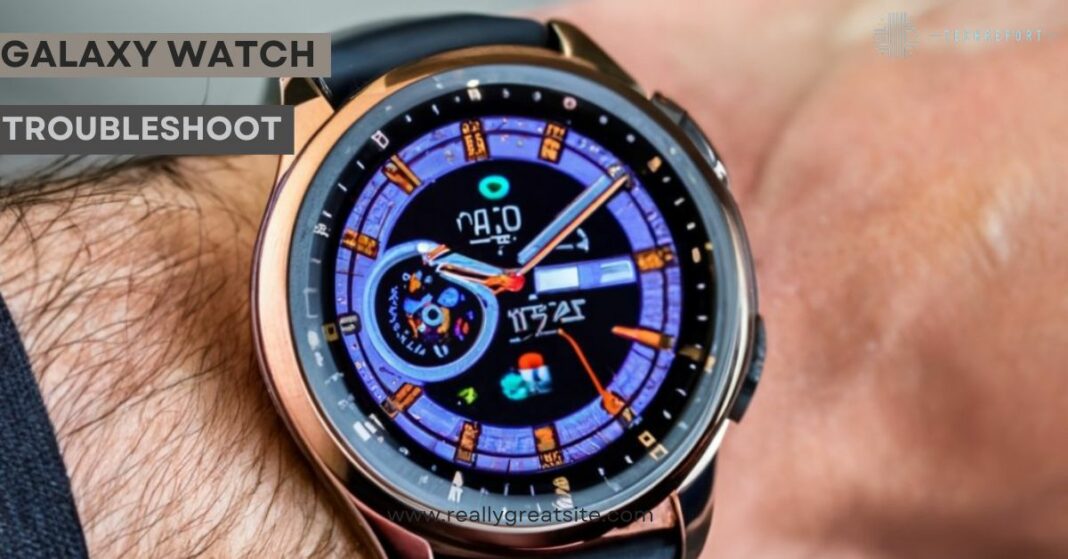Your Galaxy Watch is a remarkable piece of technology that brings convenience and functionality to your wrist. It seamlessly tracks your fitness, delivers notifications, and allows you to stay connected on the go. However, like any electronic device, it may encounter issues over time. Some common problems include unresponsiveness, app crashes, battery drain, or connectivity hiccups. These issues can be frustrating, but before you rush to the nearest service center, there’s a solution that might save the day: resetting your Galaxy Watch.
Resetting your Galaxy Watch can be a powerful troubleshooting tool to resolve various software-related problems. It’s akin to giving your watch a fresh start, wiping away any temporary data or misconfigurations that might be causing issues. By performing a reset, you can potentially fix unresponsive apps, improve battery life, and restore your watch to optimal performance.
In this comprehensive blog, we will take you through the step-by-step process of resetting your Galaxy Watch effectively. From soft resets to factory resets, we’ll cover all the methods available to you. You’ll learn how to address specific issues with a reset and when it’s appropriate to consider this option. Our goal is to equip you with the knowledge and confidence to troubleshoot your Galaxy Watch and avoid unnecessary trips to the service center.
We’ll delve into the benefits of different reset types, emphasizing the importance of data backup before taking the plunge. Worried about your watch’s PIN or password? We’ve got you covered with tips on handling those situations as well. Whether you own the latest Galaxy Watch Active 2 or a previous model, we’ll provide tailored guidance to ensure a successful reset process.
Join us as we explore the world of Galaxy Watch resets, offering solutions to common problems and insights on maintaining a healthy smartwatch experience. By the end of this blog, you’ll be equipped with the tools to navigate your Galaxy Watch’s performance challenges and embrace a seamless and optimized user experience. So, let’s dive in and uncover the magic of resetting your Galaxy Watch!
Why Reset Your Galaxy Watch?

Your Galaxy Watch, like any other electronic device, may encounter various issues during its lifespan. Some of the common problems that may warrant a reset include:
- Unresponsive Apps: Apps on your Galaxy Watch may become unresponsive or freeze, hindering their functionality and causing frustration.
- Battery Drain: Over time, you may notice a decline in your watch’s battery life, leading to more frequent charging.
- Slow Performance: The watch may exhibit sluggishness, delaying response times and affecting overall performance.
- Connectivity Problems: Your Galaxy Watch might struggle to connect to your smartphone or experience issues with Wi-Fi and Bluetooth connections.
- App Crashes: Certain apps may crash unexpectedly, disrupting their usability and requiring frequent relaunching.
- Syncing Issues: Data synchronization between your Galaxy Watch and smartphone may become unreliable, affecting health and fitness tracking.
Before resorting to a reset, it’s essential to troubleshoot and try other solutions, especially for minor issues. Here’s when you should consider a reset and when to troubleshoot first:
Consider a Reset:
- Persistent Issues: If you encounter recurrent problems like unresponsive apps, battery drain, or connectivity glitches despite other troubleshooting attempts, a reset may be necessary.
- Software Glitches: When your Galaxy Watch experiences software-related issues that appear difficult to resolve through regular means, a reset can clear these glitches and restore the system.
Troubleshoot First:
- Intermittent Problems: For occasional or intermittent issues, try basic troubleshooting steps first. Power cycle your watch, restart the companion app on your smartphone, or check for any pending software updates.
- App-Specific Troubles: If a specific app is causing problems, check for updates for that app or uninstall and reinstall it. This can often resolve app-related issues without the need for a reset.
- Connectivity Hiccups: For connectivity problems, ensure that your watch is in close proximity to your phone and that both devices have a stable internet connection. Resetting network settings on your phone might also help.
By troubleshooting first, you can potentially save time and effort in resolving minor issues without resorting to a reset. However, for more persistent or widespread problems affecting your Galaxy Watch’s performance, a reset could be the key to bringing it back to its optimal state. In the following sections, we’ll explore different reset methods and guide you through the process, ensuring you can make an informed decision on resetting your Galaxy Watch.
Preparing for a Reset
Before you embark on the journey of resetting your Galaxy Watch, it’s crucial to make some preparations to ensure a smooth and hassle-free process. Taking a few precautions can safeguard your data and help you avoid potential issues during and after the reset.
One of the essential steps before resetting your Galaxy Watch is backing up your data. A factory reset will erase all settings, preferences, and installed apps, so creating a backup ensures you can restore your watch to a familiar state afterward. To back up your Galaxy Watch data, follow these steps:
- Use Samsung Cloud: Galaxy Watches are often paired with Samsung smartphones, and Samsung Cloud offers a convenient backup solution. Open the Galaxy Wearable app on your smartphone, navigate to “Settings,” then “Backup and restore.” Select “Back up data,” and the app will automatically back up your Galaxy Watch data to Samsung Cloud.
- Export to External Storage: If you prefer an additional backup or have a non-Samsung phone, consider exporting your data to external storage. Some third-party apps allow you to export your fitness and health data to your phone’s storage or compatible cloud services.
A stable power source is essential during a reset to prevent any interruptions or potential data corruption. Make sure your Galaxy Watch has sufficient battery life before initiating the reset process. It’s generally advisable to have at least 50% battery remaining to ensure a successful reset.
If your watch’s battery level is low, charge it before proceeding. Connect the charging dock to a power source, place your watch on the dock, and let it charge until the battery level is adequate for the reset.
Before performing a reset, it’s a good idea to check for any available firmware updates for your Galaxy Watch. Manufacturers release updates to improve performance, fix bugs, and introduce new features. Updating your watch’s firmware ensures that you have the latest software enhancements before initiating a reset.
To check for firmware updates, follow these steps:
- Connect to Your Smartphone: Ensure that your Galaxy Watch is paired and connected to your smartphone via Bluetooth.
- Open the Galaxy Wearable App: Launch the Galaxy Wearable app on your smartphone.
- Check for Updates: In the app, navigate to “Settings,” then select “Software update.” Tap on “Download and install” to check for available updates for your Galaxy Watch.
- Update Your Watch: If updates are available, follow the on-screen prompts to download and install them on your Galaxy Watch.
By backing up your data, ensuring adequate battery life, and updating your watch’s firmware, you can prepare your Galaxy Watch for a reset with confidence. In the next sections, we’ll dive into the different reset methods available for your Galaxy Watch and guide you through each process step by step.
How to Reset Galaxy Watch to Factory Settings

A factory reset is a powerful solution to address persistent issues and restore your Galaxy Watch to its original state. It erases all user data, settings, and installed apps, essentially taking your watch back to the way it was when you first unboxed it. In this section, we’ll explore two methods to perform a factory reset: a soft reset and a hard reset.
A soft reset is a quick and non-intrusive way to give your Galaxy Watch a fresh start. It’s akin to restarting your computer or smartphone. A soft reset clears temporary data and can resolve minor software glitches without erasing your personal data or settings. Follow these steps to perform a soft reset on your Galaxy Watch:
- Navigate to the Home Screen: On your Galaxy Watch, press the physical button on the side to go to the home screen.
- Open the Power Menu: Press and hold the physical button until the power menu appears on the screen.
- Select Restart: Swipe to scroll through the options and tap on “Restart.”
- Confirm the Restart: Your watch will ask for confirmation. Tap “OK” to proceed with the soft reset.
- Wait for the Restart: Your Galaxy Watch will now initiate the restart process. It may take a few moments to complete.
A soft reset is suitable for addressing minor issues like frozen apps, unresponsive touchscreens, or intermittent performance hiccups. It’s a safe method that won’t erase your data, making it an ideal first step in troubleshooting.
A hard reset, also known as a factory reset or master reset, is a more comprehensive approach that erases all data and settings on your Galaxy Watch. It is recommended for addressing persistent and complex issues that cannot be resolved with a soft reset or other troubleshooting methods. Keep in mind that a hard reset will remove all your personalized settings and installed apps. Ensure you have backed up your data before proceeding with a hard reset. Follow these steps to perform a hard reset on your Galaxy Watch:
- Navigate to the Home Screen: On your Galaxy Watch, press the physical button on the side to go to the home screen.
- Open the Settings Menu: Tap on the “Settings” icon (gear-shaped) on the home screen to access the settings menu.
- Scroll to Reset: Swipe up or down to scroll through the settings menu, and select “General.”
- Access Reset Options: Within the General settings, tap on “Reset.”
- Perform Factory Reset: Choose “Factory reset” from the available reset options.
- Confirm the Reset: Your watch will display a warning about data loss. To proceed, tap “OK.”
- Enter Your PIN: If you have set a PIN or password for your watch, you’ll be prompted to enter it to confirm the reset.
- Initiate the Reset: Once the PIN is confirmed, tap “Done” to initiate the factory reset.
- Wait for the Reset: Your Galaxy Watch will now perform the factory reset. The process may take a few minutes.
A hard reset should be used as a last resort when all other troubleshooting methods have failed to resolve significant issues. It will erase all personal data, including health and fitness tracking history, app settings, and installed apps. Therefore, it’s crucial to back up your data before performing a hard reset to avoid permanent data loss.
In the next sections, we’ll explore additional reset methods for your Galaxy Watch, as well as troubleshooting tips to address specific scenarios. Remember, a reset is a powerful tool, but it should be used judiciously to ensure a smooth and optimized user experience with your Galaxy Watch.
Troubleshooting Issues Before Resetting
Before jumping to a reset, it’s essential to troubleshoot the problems you’re facing with your Galaxy Watch. Often, simple solutions can fix common issues, and a reset might not be necessary. In this section, we’ll guide you through identifying and isolating common problems and provide potential solutions to address them effectively.
- Unresponsive Apps: If specific apps on your Galaxy Watch are not working correctly or freeze frequently, it might be an app-specific issue rather than a system-wide problem.
- Battery Drain: If you notice a sudden decline in battery life, several factors, such as app usage, connectivity, and display settings, could be contributing to the issue.
- Slow Performance: Sluggish performance might be caused by too many open apps or running processes. It could also be due to outdated software.
- Connectivity Problems: Issues with Bluetooth, Wi-Fi, or mobile data can impact your watch’s connectivity with your smartphone or other devices.
- Force Close Apps: If an app becomes unresponsive or frozen, try force-closing it. Press and hold the Home button to access the recent apps, and then swipe left or right to find the troublesome app. Swipe it away to force close it.
- Reboot Your Galaxy Watch: A simple reboot can often resolve temporary glitches. Press and hold the physical button until the power menu appears, and then tap on “Restart.”
- Clear Cache: If a specific app behaves erratically, try clearing its cache. Go to Settings > Apps, select the problematic app, and tap “Clear cache.”
- Check for Updates: Ensure that your Galaxy Watch and the companion app on your smartphone have the latest software updates. Outdated software can lead to compatibility issues.
- Check Bluetooth Connection: Make sure your Galaxy Watch is properly paired with your smartphone and that Bluetooth is enabled on both devices. Restart both the watch and the phone if necessary.
- Verify Wi-Fi and Mobile Data Settings: If your Galaxy Watch supports Wi-Fi or has cellular capabilities, check that the Wi-Fi network or mobile data is working correctly.
- Reinstall Problematic Apps: If specific apps are causing connectivity or other issues, consider uninstalling and reinstalling them. This may resolve app-related glitches.
- Review App Permissions: Some apps may require specific permissions to function correctly. Ensure that the necessary permissions are granted to the apps on your Galaxy Watch.
- Reset Network Settings on Phone: If you’re experiencing persistent connectivity issues, try resetting network settings on your paired smartphone. This can sometimes resolve communication problems.
By thoroughly troubleshooting these common issues, you may find that a simple solution resolves your Galaxy Watch problems without the need for a reset. However, if the problems persist or become more severe, it might be time to consider a reset to restore your watch to peak performance. In the following sections, we’ll explore other reset methods and guide you through specific troubleshooting scenarios for your Galaxy Watch.
Optimizing Your Galaxy Watch After Reset

After performing a reset on your Galaxy Watch, it’s essential to optimize its settings and usage to ensure the best possible performance and battery life. In this section, we’ll provide you with valuable tips and best practices to maximize your watch’s efficiency.
- Adjust Screen Brightness: Lowering the screen brightness can significantly impact battery life. Go to Settings > Display > Brightness and reduce the brightness level to a comfortable yet power-efficient setting.
- Use a Simple Watch Face: Complex watch faces with animations and continuous updating may consume more battery. Opt for a simple watch face to conserve power.
- Disable Always-On Display: If your watch has an Always-On Display feature, consider turning it off when not needed. This feature can be battery-intensive as it keeps the screen partially on at all times.
- Manage Notifications: Limit the number of unnecessary notifications that come to your watch. Disable notifications from less important apps to reduce interruptions and conserve battery.
- Optimize App Usage: Periodically review and disable background activity for apps that you rarely use. Go to Settings > Apps and Notifications > App info to manage app settings.
- Turn Off Wi-Fi and GPS: If your watch supports Wi-Fi or GPS, disable them when not needed, as they can drain the battery. You can enable them when required.
- Use Power-Saving Mode: Enable Power-Saving Mode when your battery is running low to extend usage. This mode limits some features but can keep your watch running longer.
- Keep Software Updated: Regularly check for and install firmware updates for your Galaxy Watch. Software updates often bring performance improvements and bug fixes.
- Manage App Permissions: Review app permissions to ensure that apps have access only to the necessary functions. Unnecessary permissions may affect performance and privacy.
- Clear Cache and Data: Periodically clear the cache and data of apps that frequently misbehave. This can help maintain smoother app performance.
- Restart Your Watch Regularly: Give your watch a fresh start by restarting it regularly. Restarting can help clear temporary files and improve overall performance.
- Limit Background Apps: Reduce the number of background apps running on your watch to free up resources and prevent unnecessary battery consumption.
- Use Original Watch Faces: Stick to watch faces designed for your specific Galaxy Watch model. Custom watch faces or those not optimized for your watch may impact performance.
- Avoid Overloading Apps: Don’t overload apps with excessive data or settings. Keep configurations simple to prevent app slowdowns.
By following these optimization tips, you can ensure that your Galaxy Watch runs smoothly and efficiently after a reset. Taking care of your watch’s battery life and performance will enhance your overall experience and extend the longevity of your device. Remember to strike a balance between functionality and power efficiency to enjoy the full potential of your Galaxy Watch.
In Crux
Congratulations on completing this comprehensive guide on how to reset your Galaxy Watch! We’ve covered various reset methods, troubleshooting tips, and optimization techniques to help you make the most of your smartwatch. As we conclude, let’s recap some final tips to ensure a successful reset and maintain optimal watch performance.
Remember, a reset should be viewed as a last resort for resolving significant issues. By following the guidelines in this blog, you can confidently troubleshoot and optimize your Galaxy Watch for a seamless user experience.
Your Galaxy Watch is a versatile companion that keeps you connected and tracks your fitness journey. With regular maintenance, troubleshooting, and proper optimization, you can enjoy your Galaxy Watch’s full potential and stay ahead in the world of smart wearables.
Thank you for joining us on this resetting journey. Happy smartwatching!
How much did you like our detailed Galaxy Watch Reset 101: Troubleshoot Like a Pro? Please share these Blogs with your friends on social media.
Related Blogs
- Memory Card Showdown: SanDisk vs. Transcend
- How to Delete Contacts
- Apple CarPlay
- Apple Watch
- iPhone 6 vs. Nexus 6
- Acer vs Lenovo
FAQs about Galaxy Watch Reset
Will resetting my Galaxy Watch delete my data?
Yes, a factory reset, also known as a hard reset, will erase all data, settings, and installed apps from your Galaxy Watch. It's essential to back up your data before performing a hard reset to avoid losing your personalized information. After the reset, your watch will return to its original state, just like when you first set it up.
How do I back up my Galaxy Watch data?
To back up your Galaxy Watch data, you can use Samsung Cloud if your watch is paired with a Samsung smartphone. Open the Galaxy Wearable app on your phone, go to "Settings," then "Backup and restore," and select "Back up data." This will save your Galaxy Watch data to Samsung Cloud. If you don't have a Samsung phone, you can use third-party apps to export your fitness and health data to external storage.
How long does it take to reset my Galaxy Watch?
The time it takes to reset your Galaxy Watch depends on the method you choose. A soft reset usually completes within a few seconds, as it is a quick reboot process. On the other hand, a factory reset may take a few minutes to erase all data and restore default settings. The duration can vary based on your watch's model and the amount of data it needs to erase.
Can I undo a factory reset on my Galaxy Watch?
Unfortunately, a factory reset cannot be undone once it's completed. All data and settings are permanently erased during the process. This is why it's crucial to back up your data before performing a factory reset to avoid losing valuable information.
How often should I restart my Galaxy Watch?
Restarting your Galaxy Watch periodically is a good practice to maintain optimal performance. A reboot clears temporary files and refreshes the system, helping to resolve minor software issues. You can restart your watch once every few days or whenever you notice any performance hiccups.
What should I do if my Galaxy Watch is frozen or unresponsive?
If your Galaxy Watch becomes unresponsive, you can try a soft reset first. Press and hold the physical button until the power menu appears, then select "Restart." If a soft reset doesn't resolve the issue, consider performing a factory reset. However, remember to back up your data before proceeding, as a factory reset erases all data and settings.
How can I optimize the battery life on my Galaxy Watch?
To optimize battery life on your Galaxy Watch, adjust the screen brightness, use a simple watch face, and disable the Always-On Display feature when not needed. Manage app usage by limiting background activity for apps and clearing the cache regularly. Additionally, turn off Wi-Fi and GPS when not in use, and consider using Power-Saving Mode during low battery situations.
What is the difference between a soft reset and a hard reset?
A soft reset is a quick reboot that clears temporary data and resolves minor software glitches without deleting your data or settings. It's akin to restarting your device. In contrast, a hard reset, or factory reset, erases all data, settings, and installed apps, taking your watch back to its original state.
When should I consider a factory reset on my Galaxy Watch?
Consider a factory reset when you encounter persistent and significant issues that cannot be resolved through other troubleshooting methods. If your watch experiences frequent unresponsiveness, battery drain, or connectivity problems, a factory reset may help. However, try other solutions and troubleshoot first before resorting to a factory reset, as it will erase all data and settings. Always back up your data before performing a factory reset to avoid permanent data loss.




























